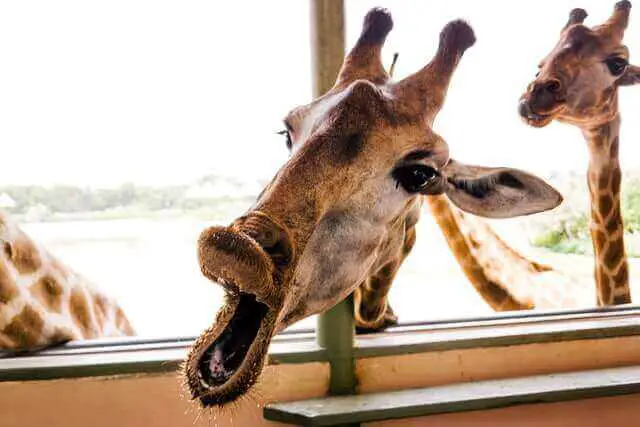The animal kingdom is full of curious creatures, each with a unique way of exploring their surroundings. From African Grey Parrots to foxes, there are many examples of curious animals in the world. The African Grey Parrot is one of the most curious animals out there, constantly exploring and searching for food. Ants have a remarkable sense of smell that helps them find food, and they work together to solve problems. Bushbabies are playful primates that often get into trouble, while chickens are constantly pecking at things and escaping their pens. Chimpanzees are intelligent creatures that love to climb trees and investigate their surroundings, and crows are known for their problem-solving abilities.
Why animals and their behavior captivate our curiosity
Animals and their behavior captivate our curiosity for several reasons. Firstly, animals exhibit a remarkable diversity of behaviors, ranging from complex social interactions to intricate hunting strategies. Their behaviors often differ from our own, and this contrast sparks our curiosity to understand their motivations and patterns.
Secondly, animals’ behavior can offer insights into their evolutionary adaptations and survival strategies. By observing and studying their behaviors, we gain a deeper understanding of how they navigate their environment, communicate, find food, reproduce, and protect themselves. This knowledge can be applied to broader scientific research and conservation efforts.
Additionally, animals’ behavior often mirrors certain aspects of our own behavior, leading to a sense of connection and fascination. We observe elements of intelligence, emotion, problem-solving, and social dynamics in many animal species, which can evoke empathy and curiosity about their inner lives.
The Curious Case of Animal Communication

- Animal communication is the exchange of information or signals between animals, allowing them to convey messages and interact with one another.
- Animals communicate through various methods, including vocalizations, body movements, visual displays, chemical signals, and even electrical signals.
- Different species have evolved specific communication systems suited to their needs and environments. For example, birds use elaborate songs and calls for mating and territory defense, while bees perform intricate dances to communicate the location of food sources.
- Animal communication serves multiple purposes, including finding mates, establishing territories, warning of danger, coordinating group activities, and expressing emotions such as fear, aggression, or contentment.
- Some animals have sophisticated communication abilities. For instance, dolphins and whales use complex vocalizations and clicks to communicate over long distances, forming intricate social structures.
- Many animals can recognize and respond to specific signals within their own species, allowing for accurate communication. This can include recognizing individual voices or visual displays.
- Animal communication can also occur between different species, such as predator-prey interactions or symbiotic relationships where signals convey mutual benefits.
- Some animals, like primates and certain bird species, possess the ability to learn and use symbolic communication systems. They can associate specific signals or sounds with objects, actions, or concepts.
- The study of animal communication helps scientists understand evolutionary processes, social dynamics, and the cognitive abilities of different species.
- Humans can interact and communicate with some animals through training, using cues and commands to convey information and receive responses.
List of 10 Most Curious Animals in the World
- Octopus: With their inquisitive and problem-solving abilities, octopuses are considered one of the most curious animals. They exhibit exploratory behaviors and are known to interact with their environment in fascinating ways.
- Chimpanzee: Chimpanzees, our closest living relatives, are highly intelligent and curious. They use tools, engage in social play, and actively explore their surroundings, demonstrating a keen interest in their environment.
- Crow: Crows are renowned for their intelligence and curiosity. They are known to engage in problem-solving tasks, exhibit tool use, and explore novel objects and situations. Their inquisitive behavior has been studied extensively by scientists.
- Dolphin: Dolphins are highly curious marine mammals. They are known to investigate objects, interact with their reflection, and approach boats to observe and play. Their social nature and cognitive abilities contribute to their curious behavior.
- Elephant: Elephants display curiosity, especially towards novel objects and situations. They often investigate new scents, objects, and even their own reflection. Their intelligent and social nature encourages exploratory behaviors.
- Raccoon: Raccoons are notorious for their curious nature. They are skilled at manipulating objects and have been observed investigating trash cans, backpacks, and other items of interest. Their nimble paws and sharp intelligence contribute to their curious behaviors.
- Bonobo: Bonobos, like chimpanzees, are highly curious and intelligent primates. They exhibit exploratory behaviors, engage in play, and show a keen interest in their surroundings. Their curiosity contributes to their ability to adapt and learn.
- Meerkat: Meerkats are social animals known for their curious behavior. They actively explore their environment, often standing upright on their hind legs to survey their surroundings. Their curiosity helps them detect potential threats and find food.
- Parrot: Parrots, known for their intelligence and mimicry skills, are also curious animals. They show interest in novel objects, engage in playful behaviors, and actively explore their surroundings. Their curiosity contributes to their ability to learn and interact with their environment.
- Squirrel: Squirrels are naturally curious creatures. They are known for investigating their surroundings, exploring new areas, and investigating objects. Their curiosity helps them find food sources and adapt to changing environments.
Conclusion
In conclusion, curiosity is a trait that can be observed in various animal species. While it is subjective to determine the “most curious” animal definitively, many species exhibit remarkable curiosity-driven behaviors. Animals such as octopuses, chimpanzees, crows, and dolphins have captivated our attention with their inquisitive nature, problem-solving abilities, and exploratory behaviors.
References:
https://faunafacts.com/animals/curious-animals/
https://wildexplained.com/curious-animals/

I’m Christopher Benjamin, a dedicated Animal Nutritionist at Ethos Veterinary Health with a Bachelor of Science in Animal Science from Michigan State University. My lifelong passion for animals led me to establish AnimalsData.Com. Here, I share expert advice, educational resources, and inspiring stories to empower fellow pet lovers worldwide. Join our community as we celebrate the beauty and diversity of our beloved animal companions!

